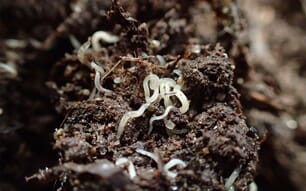California halibut, Paralichthys californius, is a high value commercial species considered to have great potential for aquaculture. In recent years cultivation of this species began in the northwestern part of Mexico.
However, similar to other cultivated flatfish species, poor growth, survival and abnormal pigmentation are bottlenecks during larval development. This may be related among other factors, to the lack of knowledge of the optimal photoperiods used in the larval stage of the California halibut and the resulting malformations, low survival, and poor pigmentation significantly decrease the overall commercial value of this species.
Thus, the aim of this study by Girón F, Baron-Sevilla B and Juan Pablo Lazo, was to evaluate the effect of photoperiod on growth, survival, food consumption and pigmentation in larvae reared under four light regimes.
Methods
Larvae of P. californicus were exposed to four photoperiod regimens for 36 days; 1) 24 hours light: 0 hours darkness (24L: 0D), 2) 14 hours light: 10 hours darkness (14L: 10D), 3) 10 hours light: 14 hours darkness (10L: 14D) and 4) 0 hours light: 24 hours darkness (0L: 24D). Three replicates per treatment were used. 150-L figerglass tanks were fitted with light-proof lids and 23-watt fluorescent lamps (1900 lux). Growth was assed by measuring standard length (SL) of the larvae using a stereomicroscope. Food consumption (rotifers) was quantified using a fluorescent technique. Rotifers were tagged with a fluorescent marker and the relationship between the number of rotifers (Nrot) in the gut and fluorescence (gflu) emitted of dissected guts (N_rot =0.0191gflu -0.0653, r2 = 0.95) used to estimate food consumption.
Results and Discussion
At the end of the experiment growth (SL = 18.57 mm) was significantly higher in California halibut larvae exposed to the 24L:0D regimen compared to the other treatments. In general, ingestion rates were significantly higher in larvae exposed to the 24L:0D compared to other treatments, which would explain the higher growth observed. However, mortality was significantly higher for 24L:0D compared to 14L:10D and 10L:14D. Although larvae exposed to constant darkness (0L:24D) were able to ingest some rotifers, they died 5 days after hatching. Normal pigmentation was higher in larvae exposed to 14L:10D and 10L:14D compared to larvae exposed to 24L:0D.
Conclusions
California halibut larvae consume more food in continuous light, which allows for faster growth. However, survival and normal pigmentation are poor in larvae exposed to continuous light or continuous darkness. There may be a disruption of the normal establishment of the endogenous biological clock and phototransduction system that regulates many physiological process associated with development. Our results suggest a requirement for a light-dark cycle for normal development in California halibut larvae.
April 2013




